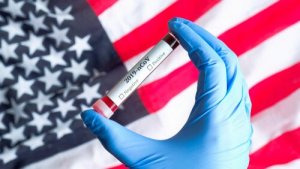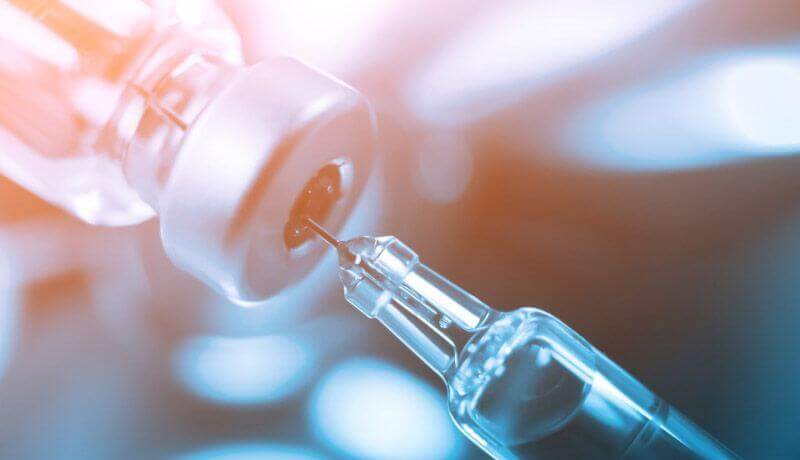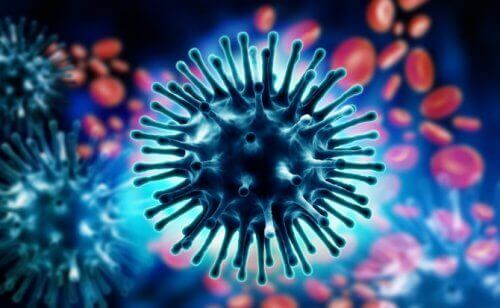The USA Is Testing a Vaccine Against Coronavirus


Written and verified by the doctor Leonardo Biolatto
In the United States, scientists have begun testing a vaccine against coronavirus COVID-19 in human beings. This is because of the urgency that has developed given the current pandemic. Although the expected results are promising, we can’t expect them to be ready in the near future.
The scientific name for the vaccine is, for now, mRNA-1273. These letters make reference to the biochemical mechanism utilized in their fabrication. It consists of a genetic platform that transcribes the genomic code of the virus in order to interpret it artificially.
The city where the testing is taking place is Seattle, and the National Institute of Allergy and Infectious Disease (NIAID) and the Kaiser Permanente Washington Health Research Institute (KPWHRI) are financing the research. Financial help is being provided by the biotechnological business Moderna.
What does phase 1 of experimentation involve?
In order to test the vaccine against coronavirus COVID-19, scientists have employed an open trial. This means that both researchers and participants are aware of the dose that will be used and for how long.
This is different from blind testing or double-blind testing, where one or both parties are unaware of the conditions in their totality. At the same time, this is not a comparative trial of placebos. Rather, it simply evaluates the response to the vaccine without comparing it to another substance.
In the first phase for testing the vaccine against coronavirus COVID-19 in humans, researchers injected the substance into 45 patients. The test subjects are individuals between the ages of 18 and 55 who were healthy before the trial. It’s important to clarify that all subjects are volunteers.
Each one receives an injection of the first dose of the vaccine and will get another dose in one month. Some will receive a dose of 25 micrograms, while others will get 100 or 250 micrograms.
Now we must wait 6 weeks, at least, to have the first results. These results will indicate whether or not the researchers can move onto the second phase of experimentation or not.

Continue reading: Three Alternative Disinfectant Gels for Coronavirus
The technology for testing the vaccine against coronavirus COVID-19
The name of the vaccine refers to the technology that researchers are using in order to produce it – mRNA is an acronym that means “messenger ribonucleic acid”.
This is because coronavirus is an RNA virus. All of its genetic information is contained in this molecule, which is similar to DNA, but not the same.
The fact that coronavirus is an RNA virus gives it a high capacity to mutate. This explains, in part, why it went from being a particle that only infected animals to having the ability to spread among humans.
Different strains of COVID-19 have been identified through the sequences of their genome. The two main strains are S and L. However, in each country where the virus has spread, scientists are progressively discovering the mutations of the virus. That is, if they have the technology to analyze their genome.
Given this virus’s great capacity to mutate, the vaccine was composed based on the currently known genomes of the coronavirus variants SARS and MERS. These are the particles that caused two previous epidemics of this virus family among humans.

Discover more: Common Myths about Coronavirus
The last kick for the vaccine
Scientists, who have the genetic information of SARS and MERS, added the genome sequence found in the Wuhan, China mutation. With this information, along with mARN technology, they were able to produce the vaccine.
They were also able to develop it quickly because they managed to understand the infectious potency of coronavirus’s outer covering. Rightfully, the name of the virus comes from the crown shape of its exterior.
The tips on the “crown” of COVID-19 are part of a mechanism for penetrating cells. There, in its spicules, resides a key protein that functions as a key to access the cellular membrane of the human body.
What can we expect now from the testing of the vaccine against coronavirus COVID-19?
The testing of this vaccine brings hope. It means that there have been advancements in the identification of the virus and in the capacity we have to prevent it on a cellular level. But it’s important to remember that experimentation is still in its first phase.
We will have to wait at least 6 more weeks to discover the first results. Then, researches will have to speculate if the results are good enough to initiate phase 2. Specialists in immunizations calculate that it will be a year before the vaccine is completely developed and available to the masses.
All cited sources were thoroughly reviewed by our team to ensure their quality, reliability, currency, and validity. The bibliography of this article was considered reliable and of academic or scientific accuracy.
- Casadevall, Arturo, and Liise-anne Pirofski. “The convalescent sera option for containing COVID-19.” The Journal of Clinical Investigation 130.4 (2020).
- Liu, Cynthia, et al. “Research and Development on Therapeutic Agents and Vaccines for COVID-19 and Related Human Coronavirus Diseases.” (2020).
- Prompetchara, Eakachai, Chutitorn Ketloy, and Tanapat Palaga. “Immune responses in COVID-19 and potential vaccines: Lessons learned from SARS and MERS epidemic.” Asian Pacific J. allergy Immunol 10 (2020).
- Chen, Wen-Hsiang, et al. “The SARS-CoV-2 Vaccine Pipeline: an Overview.” Current Tropical Medicine Reports (2020): 1-4.
This text is provided for informational purposes only and does not replace consultation with a professional. If in doubt, consult your specialist.








